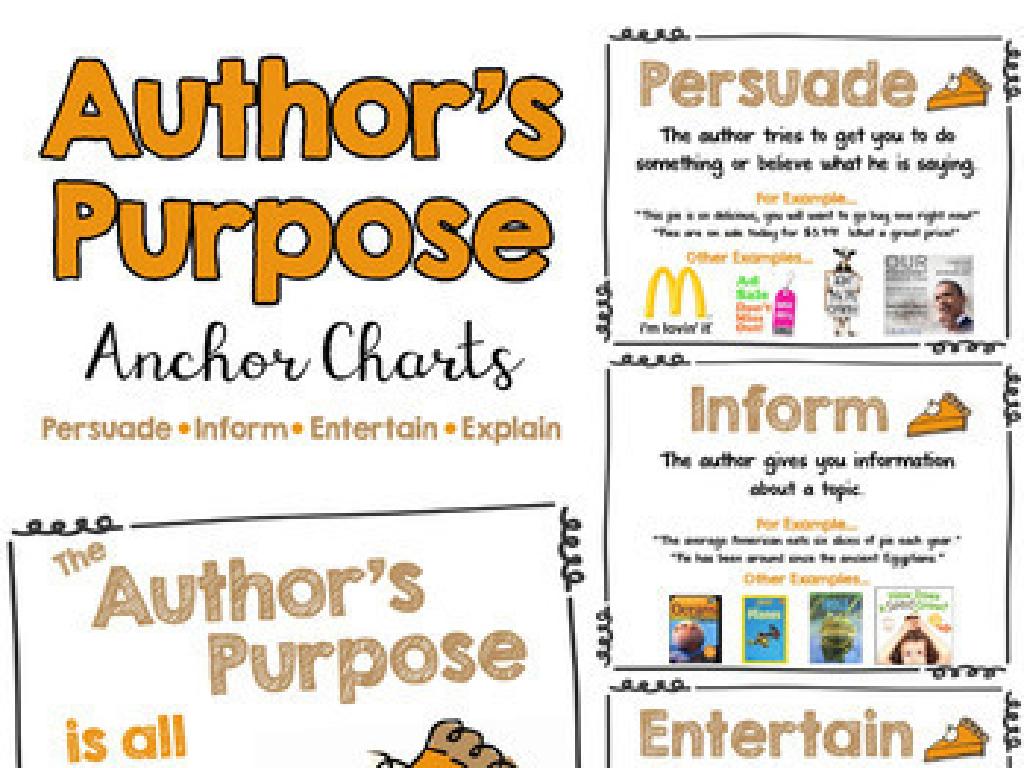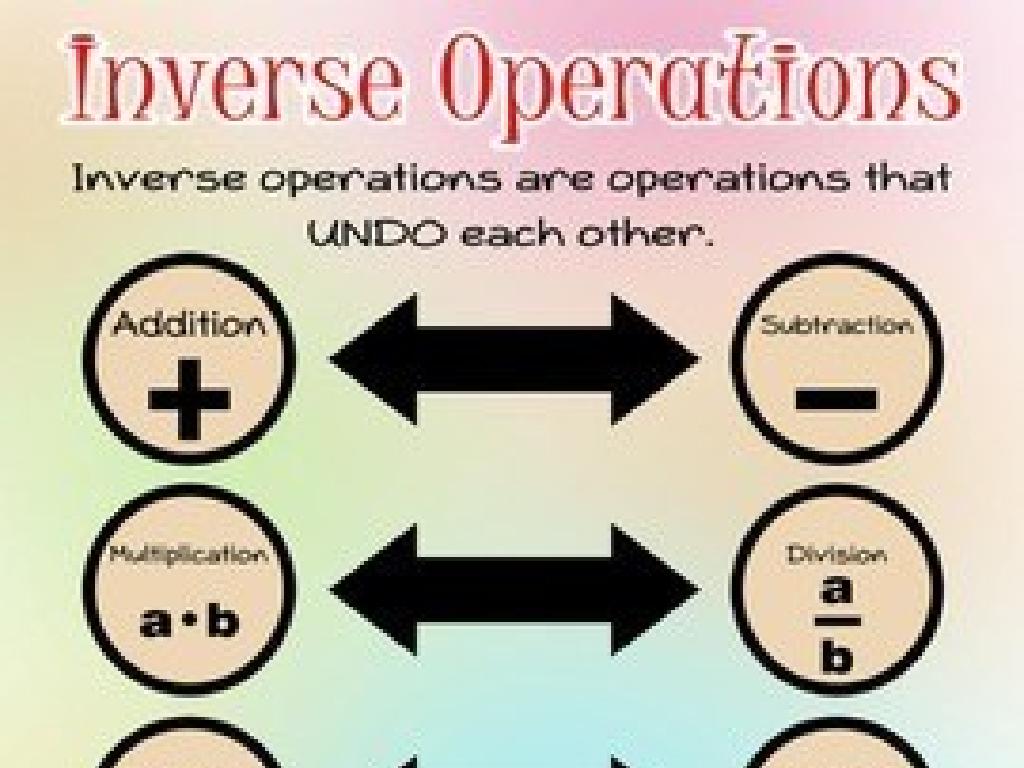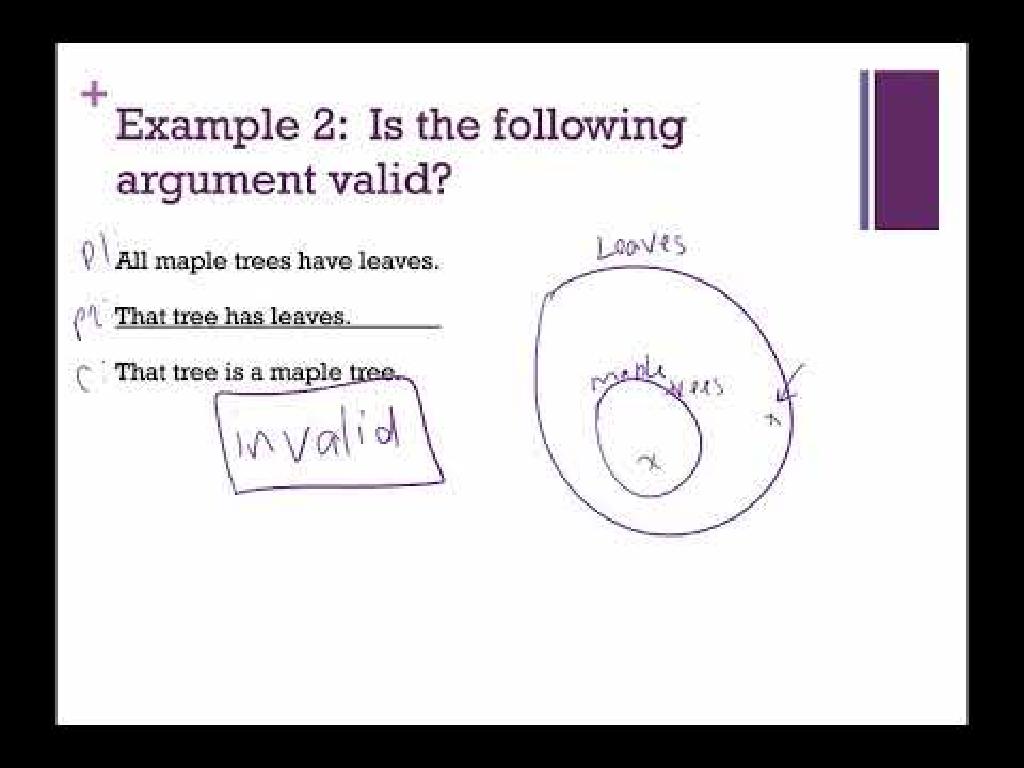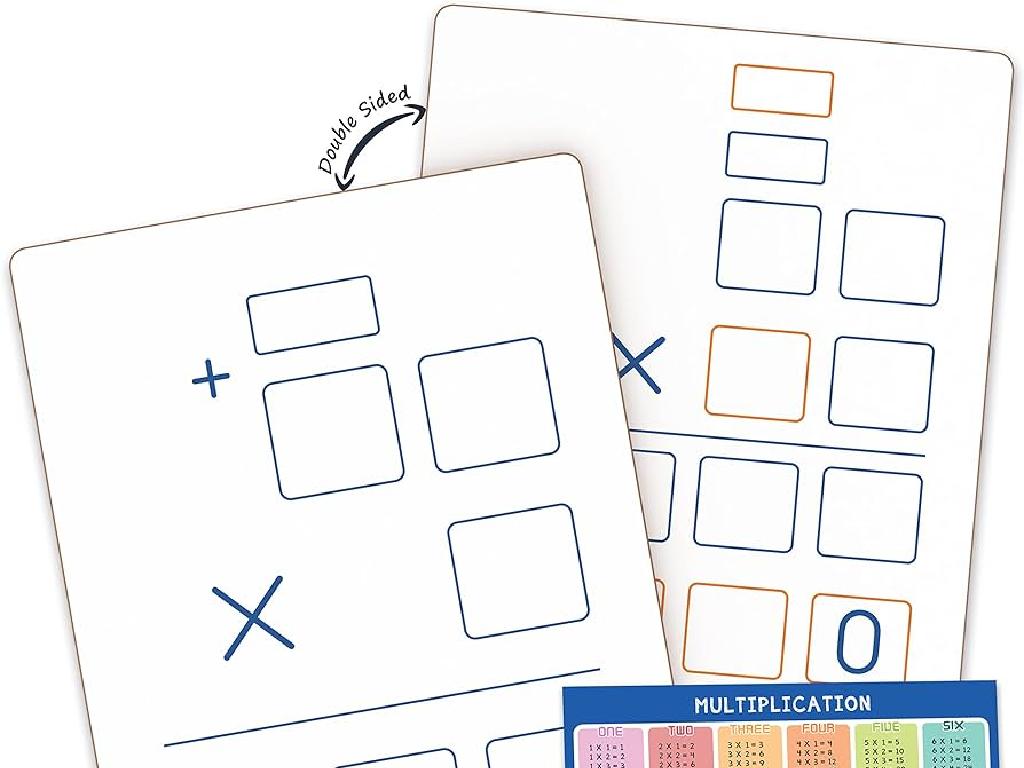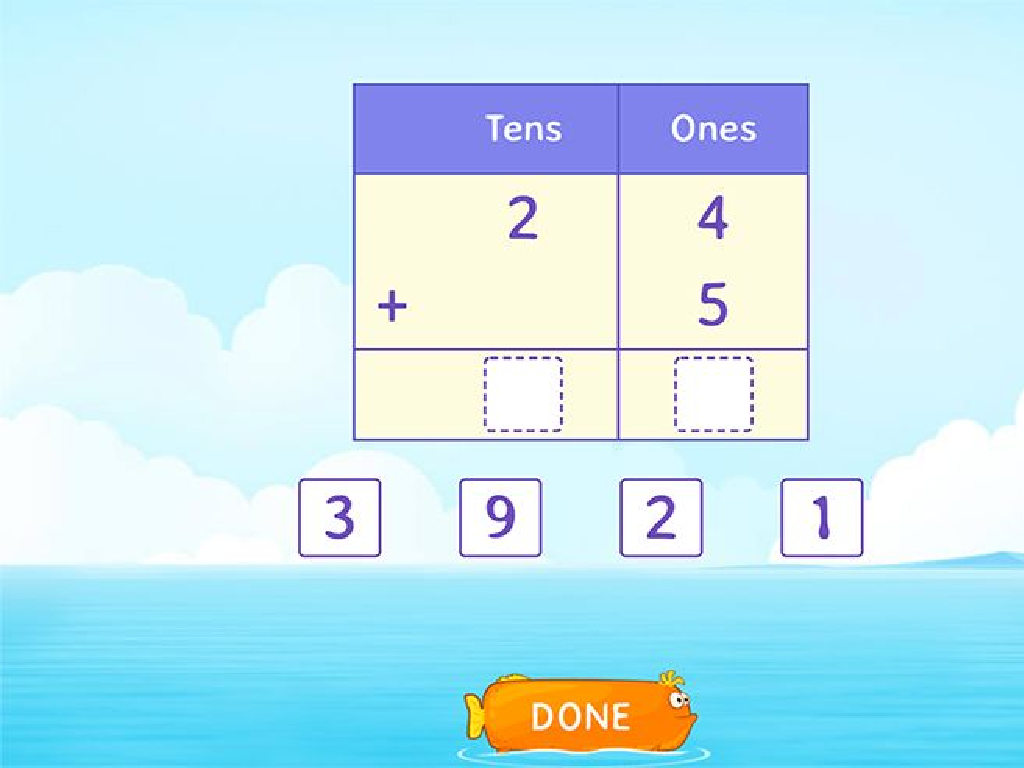Distinguish Facts From Opinions
Subject: Language arts
Grade: Sixth grade
Topic: Persuasive And Opinion Writing
Please LOG IN to download the presentation. Access is available to registered users only.
View More Content
Facts vs. Opinions in Persuasive Writing
– What is persuasive writing?
– Persuasive writing aims to convince readers to accept a viewpoint.
– Defining facts and opinions
– Facts are statements that can be proven. Opinions express personal beliefs.
– The importance of distinguishing
– Knowing the difference strengthens arguments and critical thinking.
– How to identify facts and opinions
– Use evidence for facts and look for subjective language for opinions.
|
This slide introduces students to the concept of persuasive writing, with a focus on understanding the difference between facts and opinions. It’s crucial for students to recognize that facts are verifiable and objective, while opinions are based on personal feelings and beliefs. Emphasize the significance of this distinction in constructing strong, credible arguments. Provide examples of each and discuss how persuasive writing often blends the two, but a good writer knows how to clearly indicate which is which. Encourage students to practice by identifying statements as fact or opinion in articles, books, or other media they encounter.
Understanding Facts in Writing
– Define a fact
– A statement that can be proven true or false
– Characteristics of facts
– Facts are objective, verifiable, and unchanging
– Examples of facts
– ‘The Earth orbits the Sun’, ‘Water freezes at 0°C’
– Fact vs. Opinion
– Facts are indisputable truths, unlike opinions which are personal beliefs
|
This slide aims to clarify the concept of a fact for students. Begin with the definition, emphasizing that a fact is something that can be proven true or false with evidence. Discuss the characteristics of facts, such as being objective and verifiable. Provide clear examples that students can relate to, such as scientific facts or historical events. Highlight the difference between facts and opinions, stressing that facts are universally accepted truths, while opinions are based on personal feelings or beliefs. Encourage students to think critically about the information they encounter and to practice distinguishing facts from opinions in various texts.
Understanding Opinions in Writing
– Define an opinion
– A view or judgment formed about something, not necessarily based on fact or knowledge.
– Traits of opinions
– Opinions are subjective, biased, and based on feelings.
– Opinion versus fact
– Opinions can be argued, unlike facts which are indisputable.
– Examples in literature
– ‘The best book ever’ shows the writer’s belief, not a proven fact.
|
This slide aims to help students recognize opinions in writing. Begin by defining an opinion as a personal belief or judgment that is not founded on certainty or proof. Discuss how opinions are often influenced by one’s feelings or perspectives, making them subjective. Highlight the difference between facts, which are objective and verifiable, and opinions, which are personal and debatable. Use examples from familiar texts or student experiences to illustrate opinions, such as book reviews or persuasive essays. Encourage students to think critically about the language used in opinions and how it differs from factual statements. This understanding is crucial for their development in persuasive and opinion writing.
Comparing Facts and Opinions
– Similarities between facts and opinions
– Differences that set them apart
– Facts are verifiable, opinions are personal beliefs
– Tips to identify each in texts
– Look for evidence, check if it’s subjective or objective
– Classify examples interactively
– We’ll practice with sentences to determine fact or opinion
|
This slide aims to help students understand the concept of facts and opinions, which is crucial for developing critical reading and writing skills. Start by discussing that both facts and opinions can be found in various texts, and sometimes they can be presented in similar ways. Emphasize that facts are statements that can be proven true or false, while opinions are based on personal feelings and beliefs and cannot be proven. Provide students with strategies to distinguish between the two, such as looking for objective evidence or subjective language. Engage the class with interactive examples where they can apply these strategies to classify statements as facts or opinions. This activity will reinforce their understanding and help them in identifying the two in real-world contexts.
The Power of Facts and Opinions in Writing
– Importance in persuasive writing
– Facts provide evidence, opinions offer perspective.
– Influence on the reader’s perspective
– Opinions can shape beliefs, facts can convince.
– Role in developing critical thinking
– Analyzing both is key to understanding arguments.
|
Understanding the distinction between facts and opinions is crucial for students as they develop their persuasive writing skills. Facts are verifiable pieces of information that serve as the backbone of credible arguments, while opinions express personal beliefs or judgments that can sway the reader’s emotions and thoughts. Teaching students to identify and use both effectively will not only enhance their writing but also sharpen their critical thinking skills. They will learn to evaluate the strength of arguments, discern bias, and appreciate the importance of evidence-based reasoning. Encourage students to practice distinguishing facts from opinions in various texts and to use this knowledge to bolster their own persuasive essays.
Class Activity: Fact or Opinion?
– Identify statements as fact or opinion
– Work in pairs for discussion
– Choose a partner and discuss the reasons for your choices
– Decide if each statement is fact or opinion
– Use evidence from the text to support your decision
– Share findings with the class
– Present your decisions and reasoning to the class
|
This activity is designed to help students practice distinguishing between factual statements and opinions. Provide students with a list of mixed statements and have them work in pairs to discuss whether each statement is a fact that can be proven or an opinion that expresses a personal belief or feeling. Encourage them to use evidence from the text to justify their decisions. After the pair work, facilitate a class discussion where each pair shares their findings and explains their reasoning. This will not only help them understand the concept better but also develop critical thinking and reasoning skills. Possible variations of the activity could include using statements related to a current lesson, having students create their own statements, or using examples from popular media.
Writing Exercise: Persuasion in Action
– Craft a persuasive paragraph
– Mix facts with opinions
– Facts are indisputable truths, opinions are personal beliefs
– Justify your word choices
– Explain why you used each fact or opinion
– Share and discuss in class
|
This slide introduces a writing exercise aimed at helping students practice distinguishing between facts and opinions within the context of persuasive writing. Students are tasked with writing a short paragraph that persuasively argues a point, using a combination of factual information and their personal opinions. They should be prepared to explain the rationale behind their choice of facts and opinions, demonstrating an understanding of how each contributes to persuasive writing. In the next class, students will share their paragraphs and discuss the effectiveness of their persuasive techniques. This activity will enhance their critical thinking and reasoning skills, as well as their ability to articulate and defend their viewpoints.
Wrapping Up: Facts vs. Opinions
– Recap: Facts vs. Opinions
– Facts are indisputable truths, opinions are personal beliefs.
– Impact on your writing skills
– Using facts and opinions effectively can enhance your persuasive writing.
– Open floor for Q&A session
– Time to ask any lingering questions or clarify doubts.
– Reflect on today’s learning
– Think about how distinguishing between facts and opinions can improve your arguments.
|
As we conclude, revisit the key differences between facts and opinions, emphasizing the importance of using both to strengthen persuasive writing. Encourage students to reflect on how identifying facts and opinions can aid in constructing more compelling arguments and narratives. Open the floor for a Q&A session, allowing students to ask questions or express any uncertainties they may have. Finally, prompt students to consider how today’s lesson can be applied to their future writing assignments, fostering critical thinking and self-assessment.

